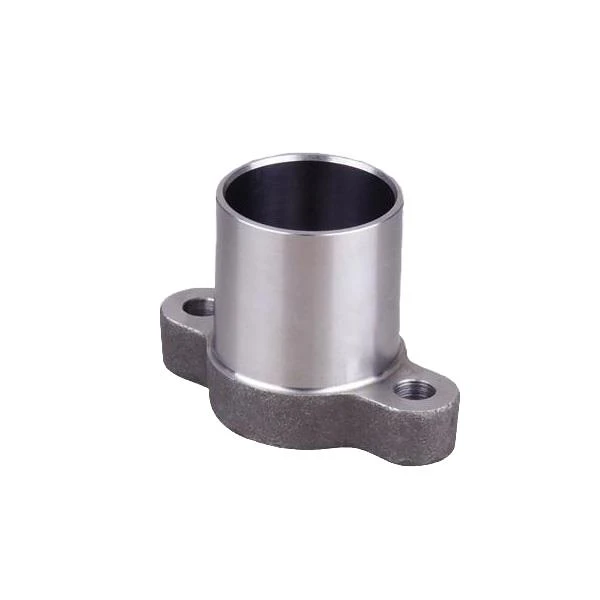part stamping
The Art and Science of Part Stamping
Part stamping is a critical manufacturing process widely used in various industries, including automotive, aerospace, and electronics. This method involves the production of parts by applying force to a sheet metal blank, transforming it into the desired shape through techniques like bending, piercing, drawing, or blanking. With advancements in technology, part stamping has evolved into a highly efficient and precise manufacturing process, making it an integral component of modern production lines.
History and Evolution
The origins of metal stamping can be traced back to the early days of metalworking when artisans used hammers and manual tools to shape metal. As the Industrial Revolution progressed, more sophisticated methods and machinery were developed. The introduction of mechanical presses in the 19th century marked a significant turning point, enabling mass production of stamped parts with greater accuracy and speed. Today, computerized numerical control (CNC) machines and advanced robotics further enhance the capabilities of stamping processes, allowing for intricate designs and complex geometries that were once unimaginable.
Types of Stamping Processes
There are several types of stamping processes, each designed for specific applications
1. Blanking This is the initial step in manufacturing when a flat sheet of metal is cut into specific shapes that can be further processed. The separated pieces, known as blanks, serve as the foundation for subsequent operations.
2. Piercing This technique involves creating holes in the metal sheet. The punch creates openings defined by the desired shape, which is often used for fasteners and other assembly components.
3. Bending This process shapes the metal by applying force to induce a bend or angle. It is essential for creating parts that require a combination of flat and angled surfaces.
4. Drawing Deep drawing is a stamping technique that transforms flat metal sheets into three-dimensional shapes, such as containers or enclosures. It often requires specialized tools to ensure the material is stretched evenly without breaking.
5. Forming This is a broader category that includes various techniques like flanging and curling, which create specific features on parts.
Materials Used in Part Stamping
The choice of material is crucial in part stamping. Commonly used materials include mild steel, stainless steel, aluminum, brass, and various alloys. The selection depends on factors such as the requirements for strength, corrosion resistance, weight, and cost. Steel is favored for its durability and relatively low cost, making it the go-to choice for automotive components. Meanwhile, aluminum is increasingly popular due to its lightweight properties, which contribute to energy efficiency in vehicles.
part stamping

Advantages of Part Stamping
Part stamping offers numerous advantages, making it a preferred method of manufacturing
- Precision Computer-controlled stamping machines can achieve tight tolerances, ensuring that parts fit together accurately in assemblies.
- Speed The high-speed nature of stamping allows for rapid production rates, making it suitable for both small and large-scale manufacturing.
- Cost-effectiveness Once the tooling is established, the cost per unit decreases with increased production volume, making it economically viable for mass production.
- Versatility Stamping can accommodate a wide range of shapes and sizes, providing flexibility in product design.
Challenges in Part Stamping
While part stamping is advantageous, it is not without challenges. Tooling costs can be substantial, especially for bespoke or complex parts requiring custom dies. Additionally, the setup time for press machines can impact production timelines. Moreover, processes must be carefully monitored to prevent issues such as material fracture, misalignment, or variations in thickness.
Future Trends
The future of part stamping looks promising, with the integration of advanced technologies such as automation, artificial intelligence, and real-time monitoring systems. Smart manufacturing practices are being adopted to streamline operations, improve efficiency, and reduce waste. Additionally, as sustainability becomes a key concern, industry players are exploring eco-friendly materials and processes to minimize environmental impact.
Conclusion
Part stamping is not merely a manufacturing process; it is an art form that combines innovation and practicality. As technology continues to advance, the processes, materials, and designs associated with part stamping will undoubtedly evolve, further enhancing its role in the global manufacturing landscape. Whether in the production of automotive components, electronic housings, or everyday household items, part stamping will remain a vital technique, shaping the way we produce and consume goods in the future.
-
OEM Sand Cast Pump Valve Fittings - Baoding Hairun | Precision Engineering, CustomizableNewsJul.30,2025
-
OEM Sand Cast Pump Valve Fittings - Baoding Hairun Machinery And Equipment Trading Co., Ltd.NewsJul.30,2025
-
OEM Sand Cast Pump Valve Fittings - Baoding Hairun Machinery And Equipment Trading Co., Ltd.NewsJul.30,2025
-
OEM Sand Cast Pump Valve Fittings - Baoding Hairun Machinery|Precision Engineering&Fluid ControlNewsJul.30,2025
-
OEM Sand Cast Pump Valve Fittings - Baoding Hairun Machinery And Equipment Trading Co., Ltd.NewsJul.30,2025
-
OEM Sand Cast Pump Valve Fittings-Baoding Hairun Machinery And Equipment Trading Co., Ltd.NewsJul.30,2025















